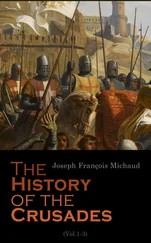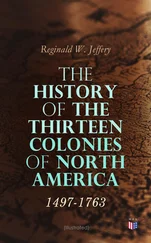From the settlement of New York by the Dutch in 1609, down to its conquest by the English in 1664, there is no reliable record of slavery in that colony. That the institution was coeval with the Holland government, there can be no historical doubt. During the half-century that the Holland flag waved over the New Netherlands, slavery grew to such proportions as to be regarded as a necessary evil. As early as 1628 the irascible slaves from Angola, 215Africa, were the fruitful source of wide-spread public alarm. A newly settled country demanded a hardy and energetic laboring class. Money was scarce, the colonists poor, and servants few. The numerous physical obstructions across the path of material civilization suggested cheap but efficient labor. White servants were few, and the cost of securing them from abroad was a great hinderance to their increase. The Dutch had possessions on the coast of Guinea and in Brazil, and hence they found it cheap and convenient to import slaves to perform the labor of the colony. 216
The early slaves went into the pastoral communities, worked on the public highways, and served as valets in private families. Their increase was stealthy, their conduct insubordinate, and their presence a distressing nightmare to the apprehensive and conscientious.
The West India Company had offered many inducements to its patroons. 217And its pledge to furnish the colonists with "as many blacks as they conveniently could," was scrupulously performed. 218In addition to the slaves furnished by the vessels plying between Brazil and the coast of Guinea, many Spanish and Portuguese prizes were brought into the Netherlands, where the slaves were made the chattel property of the company. An urgent and extraordinary demand for labor, rather than the cruel desire to traffic in human beings, led the Dutch to encourage the bringing of Negro slaves. Scattered widely among the whites, treated often with the humanity that characterized the treatment bestowed upon the white servants, there was little said about slaves in this period. The majority of them were employed upon the farms, and led quiet and sober lives. The largest farm owned by the company was " cultivated by the blacks ;" 219and this fact was recorded as early as the 19th of April, 1638, by "Sir William Kieft, Director-General of New Netherland." And, although the references to slaves and slavery in the records of Amsterdam are incidental, yet it is plainly to be seen that the institution was purely patriarchal during nearly all the period the Hollanders held the Netherlands.
Manumission of slaves was not an infrequent event. 220Sometimes it was done as a reward for meritorious services, and sometimes it was prompted by the holy impulses of humanity and justice. The most cruel thing done, however, in this period, was to hold as slaves in the service of the company the children of Negroes who were lawfully manumitted. "All their children already born, or yet to be born, remained obligated to serve the company as slaves." In cases of emergency the liberated fathers of these bond children were required to serve "by water or by land" in the defence of the Holland government. 221It is gratifying, however, to find the recorded indignation of some of the best citizens of the New Netherlands against the enslaving of the children of free Negroes. It was severely denounced, as contrary to justice and in "violation of the law of nature." "How any one born of a free Christian mother" could, notwithstanding, be a slave, and be obliged to remain such, passed their comprehension. 222It was impossible for them to explain it." And, although "they were treated just like Christians," the moral sense of the people could not excuse such a flagrant crime against humanity. 223
Director-General Sir William Kieft's unnecessary war, "without the knowledge, and much less the order, of the XIX., and against the will of the Commonality there," had thrown the Province into great confusion. Property was depreciating, and a feeling of insecurity seized upon the people. Instead of being a source of revenue, New Netherlands, as shown by the books of the Amsterdam Chamber, had cost the company, from 1626 to 1644, inclusive, "over five hundred and fifty thousand guilders, deducting the returns received from there." It was to be expected that the slaves would share the general feeling of uneasiness and expectancy. Something had to be done to stay the panic so imminent among both classes of the colonists, bond and free. The Bureau of Accounts made certain propositions to the company calculated to act as a tonic upon the languishing hopes of the people. After reciting many methods by which the Province was to be rejuvenated, it was suggested "that it would be wise to permit the patroons, colonists, and other farmers to import as many Negroes from the Brazils as they could purchase for cash, to assist them on their farms; as (it was maintained) these slaves could do more work for their masters, and were less expensive, than the hired laborers engaged in Holland, and conveyed to New Netherlands, " by means of much money and large promises ." 224
Nor was the substitution of slave labor for white a temporary expedient. Again in 1661 a loud call for more slaves was heard. 225In the October treaty of the same year, the Dutch yielded to the seductive offer of the English, "to deliver two or three thousand hogsheads of tobacco annually … in return for negroes and merchandise." At the first the Negro slave was regarded as a cheap laborer—a blessing to the Province; but after a while the cupidity of the English induced the Hollanders to regard the Negro as a coveted, marketable chattel.
"In its scheme of political administration, the West-India Company exhibited too often a mercantile and selfish spirit; and in encouraging commerce in Negro slaves, it established an institution which subsisted many generations after its authority had ceased." 226
The Dutch colony was governed by the Dutch and Roman law. The government was tripartite—executive, legislative, and judicial—all vested in, and exercised by, the governor and council. There seemed to be but little or no necessity for legislation on the slavery question. The Negro seemed to be a felt need in the Province, and was regarded with some consideration by the kind-hearted Hollanders. Benevolent and social, they desired to see all around them happy. The enfranchised African might and did obtain a freehold; while the Negro who remained under an institution of patriarchal simplicity, scarcely knowing he was in bondage, danced merrily at the best, in "kermis," at Christmas and Pinckster. 227There were, doubtless, a few cases where the slaves received harsh treatment from their masters; but, as a rule, the jolly Dutch fed and clothed their slaves as well as their white servants. There were no severe rules to strip the Negroes of their personal rights—such as social amusements or public feasts when their labors had been completed. During this entire period, they went and came among their class without let or hinderance. They were married, and given in marriage; 228they sowed, and, in many instances, gathered an equitable share of the fruits of their labors. If there were no schools for them, there were no laws against an honest attempt to acquire knowledge at seasonable times. The Hollanders built their government upon the hearthstone, believing it to be the earthly rock of ages to a nation that would build wisely for the future. And while it is true that they regarded commerce as the life-blood of the material existence of a people, they nevertheless found their inspiration for multifarious duties in the genial sunshine of the family circle. A nation thus constituted could not habilitate slavery with all the hideous features it wore in Virginia and Massachusetts. The slaves could not escape the good influences of the mild government of the New Netherlands, nor could the Hollanders withhold the brightness and goodness of their hearts from their domestic slaves.
Читать дальше












